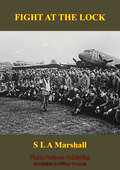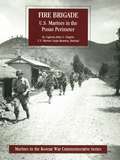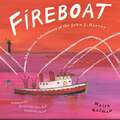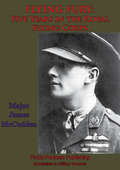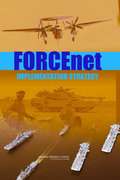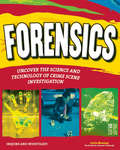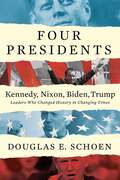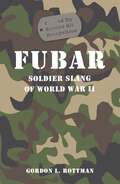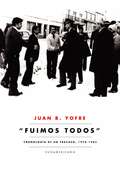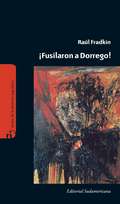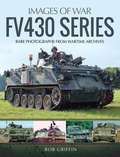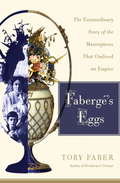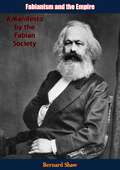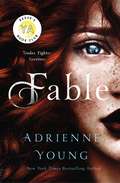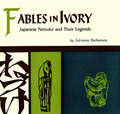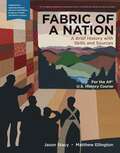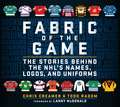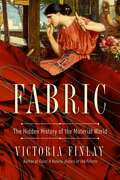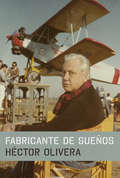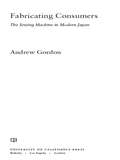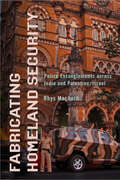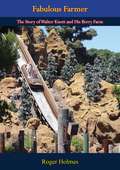- Table View
- List View
FIGHT AT THE LOCK [Illustrated Edition]
by Colonel S. L. A. MarshallIncludes 6 mapsAs the tens of thousands of American troops began their approach toward the forbidding German-defended Normandy coast, their comrades in the 82nd and 101st Airborne divisions had already flown over the Channel and began dropping and gliding into enemy territory. The Airborne Divisions had a role critical to the success of the entire Normandy Landings; beyond the initial beach landing areas were miles of flooded defended ditches and waterways. If the German troops managed to defend these bottlenecks the Americans on Utah Beach, at the extreme right of the operation, would be unable to move forward and might have foundered on the beach..."According to plan, the D Day objectives of the 501st Parachute Infantry Regiment were well concentrated. After dropping into Normandy a little to the north and east of the city of Carentan, the regiment was to press south and westward and establish the defensive position in this direction. In detail, it was to secure the line of the lower Douve River, first by seizing the strategic lock on the Canal De Vire Et Taute at Le Barquette and then by blowing the river bridges..."From the beginning, American attention was directed at the Le Barquette lock. This unique objective and its possible military application appears to have fascinated the imaginations not only of those who planned Operation Neptune but of the commanders who were to execute it. To get to the lock first and to make certain that the enemy would have no use of it became an overriding consideration with the planning and tactical forces. American apprehensions as to what might happen if the Germans gained control of the lock superinduced one of the boldest strokes of the Normandy campaign, a stroke boldly made and tactically productive. Yet whether the emphasis placed on the position by the Allied planners was justifiable was never confirmed by the attitude of the enemy."
FIRE BRIGADE: U.S. Marines In The Pusan Perimeter [Illustrated Edition] (Marines In The Korean War Commemorative Series #4)
by Captain John J. Chapin USMCIncludes over 30 maps, photos and illustrations.The Battle of Pusan Perimeter was a large-scale battle between United Nations and North Korean forces lasting from August 4 to September 18, 1950. It was one of the first major engagements of the Korean War. An army of 140,000 UN troops, having been pushed to the brink of defeat, were rallied to make a final stand against the invading North Korean army, 98,000 men strong.UN forces, having been repeatedly defeated by the advancing North Koreans, were forced back to the "Pusan Perimeter", a 140-mile (230 km) defensive line around an area on the southeastern tip of the Korean Peninsula that included the port of Pusan. The UN troops, consisting mostly of forces from the Republic of Korea (ROK), United States and United Kingdom, mounted a last stand around the perimeter, fighting off repeated North Korean attacks for six weeks as they were engaged around the cities of Taegu, Masan, and P'ohang, and the Naktong River. The massive North Korean assaults were unsuccessful in forcing the United Nations troops back further from the perimeter, despite two major pushes in August and September.North Korean troops, hampered by supply shortages and massive losses, continually staged attacks on UN forces in an attempt to penetrate the perimeter and collapse the line. However, the UN used the port to amass an overwhelming advantage in troops, equipment, and logistics, and its navy and air forces remained unchallenged by the North Koreans during the fight. After six weeks, the North Korean force collapsed and retreated in defeat after the UN force launched a counterattack at Inchon on September 15. The battle would be the furthest the North Korean troops would advance in the war, as subsequent fighting ground the war into a stalemate.
FIREBOAT: The Heroic Adventures of the John J. Harvey
by Maira Kalman* &“A hundred years from now, when people want to know what we told our children about 9/11, Kalman's book should be among the first answers.&”—Booklist, starred review * &“Intelligently conveys those unfathomable events in a way that a picture book audience can comprehend. . . . With this inspiring book, Kalman sensitively handles a difficult subject in an age-appropriate manner.&”—Publishers Weekly, starred review * &“Fireboat does many things. It sets forth an adventure, helps commemorate an anniversary, offers an interesting bit of history, celebrates the underdog, and honors the fire-fighting profession. Children and adults will respond to it in as many ways.&”—School Library Journal, starred review * &“Exciting, uplifting, and child-sensitive. . . . Revisits the tragedy without the terror and conveys pride without preachiness."—The Bulletin of the Center for Children&’s Books, starred review * &“Quintessential New York artist Kalman gives us an idiosyncratic but informative look at a Big Apple institution. . . . Kalman&’s use of the events of September 11 is honest and honorable, and rarely is she as straightforward as she is here.&”—The Horn Book, starred reviewThis is the inspiring true story of the John J. Harvey—a retired New York City fireboat reinstated on September 11, 2001. Originally launched in 1931, the Harvey was the most powerful fireboat of her time. After the September 11 attacks, with fire hydrants at Ground Zero inoperable and the Hudson River's water supply critical to fighting the blaze, the fire department called on the Harvey for help. There were adjustments—forcing water into hoses by jamming soda bottles and wood into nozzles with a sledgehammer—and then the fireboat's volunteer crew pumped much-needed water to the disaster site. The John J. Harvey proved she was still one of New York's Bravest!Maira Kalman brings a New York City icon to life, celebrating the energy, vitality and hope of a place and its people.
FLYING FURY: Five Years In The Royal Flying Corps [illustrated Edition]
by James Thomas Byford McCudden VC DSO & Ba, MC & Bar MMIllustrated Edition - contains 30 photosThe highest scoring British Air Ace reveals his daily life at the front, in the air and in combat with the Germans above the Western Front.In the muddy trenches of the Western front few rankers would have considered that they would achieve field rank of major and international celebrity. In the skies above the shell-torn landscape, any man with enough talent, daring and skill could hope to become a 'Flying Ace' by claiming five or more victories over enemy aviators. Such an adventurous warrior was James McCudden; born in 1895 in Kent, he enlisted in the Royal Engineers in 1910 as soon as he could. But he was smitten with the service in the air after a flight in his brothers plane in 1913 and transferred to the Royal Flying Corps. However he was only an engineer in 1914, but once in France despite his modest rank he was allowed to go up with his squadron and act as an observer in a two seater plane. After much good service as an observer his superiors put him forward for pilot training in 1916.McCudden's tally of the enemy over the next two years would rank him among the greatest of the World War One Aces; he claimed some 57 enemy aircraft even three in a single day in 1918. His exploits in the air were legendary, surviving an attack by the Red Baron himself, he pioneered new tactics that enabled him the edge of his enemy by using his engineering skill to fine tune his aircraft. He was awarded the Victoria Cross, DSO with Bar, MC with Bar and a Military Medal and the French Croix de Guerre for his daring, bravery and skill. It is with a sad irony that it was not his German foe that eventually ended his outstanding military service but a flying accident in 1918. He was only 23 at the time.His own exploits, adventures, tactics and escapes are best left to him in his own words, but suffice to say despite his modest retelling of his life in a day-by-day fashion remains both dramatic and engaging.
FORCEnet: IMPLEMENTATION STRATEGY
by National Research Council of the National AcademiesThe National Academies Press (NAP)--publisher for the National Academies--publishes more than 200 books a year offering the most authoritative views, definitive information, and groundbreaking recommendations on a wide range of topics in science, engineering, and health. Our books are unique in that they are authored by the nation's leading experts in every scientific field.
FORENSICS
by Samuel Carbaugh Carla MooneyForensics: Uncover the Science and Technology of Crime Scene Investigation introduces students to the fascinating world of forensic science and shows them how to find clues, analyze evidence, and crack the case.Combining hands-on activities with forensic science, kids will have fun learning about the world of forensics, evidence collection, and crime lab analysis. Entertaining illustrations and fascinating sidebarsilluminate the topic and bring it to life, reinforcing new vocabulary.Projects include documenting a crime scene, identifying fingerprints, analyzing blood spatter, and extracting DNA. Additional materials include a glossary and a list of current reference works, websites, museums, and science centers.
FOUR PRESIDENTS Kennedy, Nixon, Biden, Trump: Leaders Who Changed History in Changing Times
by Douglas E SchoenA Simon & Schuster eBook. Simon & Schuster has a great book for every reader.
FUBAR: Soldier Slang of World War II
by Gordon L. RottmanHumorous, sarcastic, sober, pessimistic, fatalistic, defiant or defeatist, slang is an important part of every soldier's vocabulary. Much of the slang of World War II was handed down from World War I and earlier conflicts. These words were so ingrained into the soldier's vocabulary that their use was continued by a new generation of soldiers and by the end of the war some terms had even passed into standard everyday usage. This book is a detailed survey of the slang of WWII as used and evolved by US, German and Commonwealth fighting men and women. It lists hundreds of these distinctive and evocative words with their definitions and origins, but and also includes contemporary cartoons and images, transporting the reader back through the decades into the world of the WWII warrior.
FUIMOS TODOS (EBOOK)
by Juan B. Yofre"Nadie fue", el libro anterior de Juan B. Yofre, se convirtió en una de las grandes sorpresas editoriales de los últimos años. Sobre la base de fuentes privilegiadas, narraba el desarrollo histórico de la Argentina de los años 70 hasta la caída de Isabel Perón. Fuimos todos es la fascinante continuación de aquel éxito: retoma los avatares de nuestra historia desde el 24 de marzo de 1976 hasta la aventura militar de Malvinas -que llevó al fin del Proceso- y sus consecuencias. Yofre repite aquí su procedimiento periodístico, exhuma documentos, apuntes, informes, cartas, que ven la luz por primera vez. Hallazgos que muestran aspectos absolutamente desconocidos de un período de violencia y dan cuenta del enfrentamiento entre los argentinos, ya no solamente de las Fuerzas Armadas y las organizaciones terroristas sino también de las continuas luchas intestinas del propio régimen castrense. Un eslabón más en la historia de la decadencia política argentina. Exhaustivamente documentado, polémico, revelador, Fuimos todos expone los hechos, como dice el autor, "sine ira et cum studio", es decir, para que el lector saque sus propias conclusiones y con la honesta intención de evitar que se repitan los nefastos errores del pasado reciente. El teniente general Jorge Rafael Videla asumió la presidencia de la Nación el 29 de marzo de 1976, luego de deponer cinco días antes a la presidenta constitucional María Estela Martínez Cartas de Perón, más conocida por su nombre artístico de "Isabel". Al poco tiempo, Videla comenzó a realizar visitas a ciudades del interior. La foto lo muestra durante un viaje a la austral ciudad de Ushuaia, Tierra del Fuego, en el invierno de 1976. Como evidencia la instantánea, a pesar del rigor climático la gente se acercaba a saludarlo. Es más, si se pone la atención se verá que un hombre salió de un lugar cerrado, sólo con un suéter, para estrechar su mano. Es una foto atípica que muestra en pequeña escala el grado de aquiescencia del que gozó el gobierno del Proceso militar en sus primeros años de gran parte de la ciudadanía. Dos años más tarde, Videla debería salir al balcón de la Casa de Gobierno para saludar a la multitud que festejaba la victoria del Campeonato Mundial de Fútbol de 1978. Y lo mismo ocurrió en septiembre de 1979, cuando la selección juvenil de fútbol se consagró campeona mundial en Japón. Esta foto fue elegida por lo escasamente conocida. Y porque exhibe a un Videla en el que no aparecen rodeándolo custodias ni agentes de seguridad. Sólo simples ciudadanos con interés en saludar a su presidente.
FUSILARON A DORREGO! (EBOOK)
by Raul FradkinPor qué fue fusilado Manuel Dorrego aquella mañana del 13 de diciembre de 1828? Cómo fue posible que el ejército que comandaba Juan Lavalle fuera derrotado por el alzamiento que protagonizaron los más variados sectores de la sociedad rural bonaerense? Cuáles fueron las características de ese masivo levantamiento? Cómo hizo Juan Manuel de Rosas para ponerse al frente? Cuáles fueron sus implicancias y consecuencias? Estas y otras preguntas han preocupado desde entonces a nuestra historiografía y miles de páginas se escribieron al respecto. Sin embargo, apoyándose en las más recientes investigaciones históricas que renovaron por completo los conocimientos disponibles sobre la economía, la sociedad y la política de esta convulsionada época, este libro intenta develar aspectos muy poco conocidos. El lector podrá incursionar en este enigmático y multifacético fenómeno social y acercarse a las motivaciones y a las formas de acción que desplegaron sus protagonistas. Concentrándose en cómo vivió la sociedad bonaerense las pasiones que desataba la lucha política se podrá tener una idea mucho más clara de ese alzamiento rural que cambió el rumbo de la historia.
FV430 Series (Images of War)
by Robert GriffinFully illustrated with archival photographs, this volume examines the development of this Cold War era armored vehicle. During the Second World War, the British infantry found itself lacking suitable transport to cope with the fast-moving German Blitzkrieg tactics. While various stopgap measures were implemented during the war, the postwar threats from nuclear, biological and chemical warfare made it imperative that a robust solution be found. By the 1960s, at the height of the Cold War, the AFV430 series was introduced. The FV300 and FV400 Cambridge carriers paved the way for the AFV430. Initially a basic armored personnel carrier, the series grew to cover a multitude of roles, including command, recovery, mortar, Swingfire, and remote mine clearing. This volume of the Images of War series describes in words and images the AFV430 and traces the development of infantry carriers for the British Army.
Faberge's Eggs
by Toby FaberIn Stradivari's Genius, Toby Faber charted the fascinating course of some of the world's most prized musical instruments. Now, in this enthralling new book, he tells the story of objects that are, to many, the pinnacle of the jeweler's art: the Fabergé imperial eggs.The Easter presents that Russia's last two czars gave to their czarinas have become synonymous with privilege, beauty, and an almost provocative uselessness. They are perhaps the most redolent symbols of the old empire's phenomenal craftsmanship, of the decadence of its court, and of the upheavals that brought about its inevitable downfall. Fabergé's Eggs is the first book to recount the remarkable story of these masterpieces, taking us from the circumstances that inspired each egg's design, through their disappearance in the trauma of revolution, to their eventual reemergence in the global marketplace.In 1885, Carl Fabergé created a seemingly plain white egg for Czar Alexander III to give to his beloved wife, Marie Fedorovna. It was the surprises hidden inside that made it special: a diamond miniature of the Imperial crown and a ruby pendant. This gift began a tradition that would last for more than three decades: lavishly extravagant eggs commemorating public events that, in retrospect, seem little more than staging posts on the march to revolution. Above all, the eggs illustrate the attitudes that would ultimately lead to the downfall of the Romanovs: their apparent indifference to the poverty that choked their country, their preference for style over substance, and, during the reign of Nicholas II, their all-consuming concern with the health of the czarevitch Alexis, the sickly heir to the throne-a preoccupation that would propel them toward Rasputin and the doom of the dynasty. More than a superb new account of a classic tragedy, Fabergé's Eggs illuminates some fascinating aspects of twentieth-century history. The eggs' amazing journey from revolutionary Russia features a cast of characters including embattled Bolsheviks, acquisitive British royals, eccentric artifact salesmen, and such famous business and society figures as Arm and Hammer, Marjorie Merriweather Post, and Malcolm Forbes. Finally, Toby Faber tantalizingly suggests that some of the eggs long thought lost may eventually emerge.Darting from the palaces of a besieged Russia to the showcases of New York's modern mega-wealthy, Fabergé's Eggs weaves a story unparalleled in its drama and extravagance. Praise for Stradivari's Genius"Fascinating . . . lively . . . more enthralling, earthy and illuminating than any fiction could be."-The New York Times Book Review"A celebration of six instruments and the master craftsman who made them . . . [Faber] brings to the subject an infectious fascination with Stradivari's life and trade. . . . He writes with clarity and fluency."-Chicago Tribune"An extraordinary accomplishment and a compelling read. Like strange totems that cast an irresistible spell, these instruments bring out the best and the worst of those who would own them, and Faber deftly tells the stories in all their rich and surprising detail."-Thad Carhart, author of The Piano Shop on the Left Bank"A worthy contribution to the ongoing legend of Stradivari."-Minneapolis Star Tribune"Fascinating, accessible, and enjoyable."-Tracy Chevalier, author of Girl with a Pearl EarringFrom the Hardcover edition.
Fabianism and the Empire: A Manifesto by the Fabian Society
by Bernard ShawIn 1900 Bernard Shaw completed the difficult task of drafting the Fabian's society position in the manifest Fabianism and the Empire. The society's progressive program advocated for socialist values, social justice and women rights. Against the background of these modern and leftist values though, the society's position on imperialism is somehow astonishing. One of the motives for its supportive stand on imperialism lies in the yet valid division they made between domestic and international politics. Edward Pease's The History of the Fabian society addresses the international system, for example under terms of efficiency and colonialism. According to him 'the only valid moral right to national possession is that the occupier is making adequate use of it for the benefit of the world community.' From the 'International Socialist point of view' national sovereignty and noninterference are not acceptable and the world must strive for an 'international civilization' according to socialist merits. Pease as well as Bernard Shaw in Fabianism and the Empire accept colonialism as a fact and furthermore they illustrate the Great Powers' advance as colonizers 'only [as] a question of time.'... Shaw points out two possible 'imperial policies' of which the second is 'a bureaucratic policy where the majority consists of colored natives.' This illustrates one of the policies the British attempted to implement in Sudan after their conquest of 1899. This paper will analyze various approaches of the British administrative in Sudan, as Indirect Rule and Native Administration. Beyond it, it will address the policy's aims and actual results with which the Sudanese had to cope and which still interfere greatly in the daily reality of Sudan. It will try to draw connection between the actual situation in Sudan, and especially in Darfur, and the colonial legacy of the British policies.
Fable: A Novel (The World of the Narrows #1)
by Adrienne YoungNEW YORK TIMES BESTSELLING SERIES A REESE WITHERSPOON x HELLO SUNSHINE BOOK CLUB YA PICK Filled with all of the action, emotion, and lyrical writing that brought readers to Sky in the Deep, New York Times bestselling author Adrienne Young returns with Fable, the first book in this new captivating duology.Welcome to a world made dangerous by the sea and by those who wish to profit from it. Where a young girl must find her place and her family while trying to survive in a world built for men. As the daughter of the most powerful trader in the Narrows, the sea is the only home seventeen-year-old Fable has ever known. It’s been four years since the night she watched her mother drown during an unforgiving storm. The next day her father abandoned her on a legendary island filled with thieves and little food. To survive she must keep to herself, learn to trust no one and rely on the unique skills her mother taught her. The only thing that keeps her going is the goal of getting off the island, finding her father and demanding her rightful place beside him and his crew. To do so Fable enlists the help of a young trader named West to get her off the island and across the Narrows to her father. But her father’s rivalries and the dangers of his trading enterprise have only multiplied since she last saw him and Fable soon finds that West isn't who he seems. Together, they will have to survive more than the treacherous storms that haunt the Narrows if they're going to stay alive. Fable takes you on a spectacular journey filled with romance, intrigue and adventure.
Fables in Ivory
by Adrienne BarbansonTo introduce these miniature sculptures to a wider audience and, at the same time, to tell some of the legends that inspired their creators, Adrienne Barbanson presents here a collection of superb photographs accompanied by a narrative text designed to enhance the reader's appreciation of this remarkable by relatively unfamiliar art.
Fables in Ivory
by Adrienne BarbansonTo introduce these miniature sculptures to a wider audience and, at the same time, to tell some of the legends that inspired their creators, Adrienne Barbanson presents here a collection of superb photographs accompanied by a narrative text designed to enhance the reader's appreciation of this remarkable by relatively unfamiliar art.
Fabric of a Nation: A Brief History with Skills and Sources, For the AP® Course
by Jason Stacy Matthew EllingtonIn 2014, College Board rolled out a new AP® U.S. History course, which centered less on memorizing content and more on developing skills. Since then, the course has been modified here and there, but very little has changed in AP® textbooks―content is still king. Until now. Fabric of a Nation is the first book to truly embrace this dramatic shift in the AP® course and in how history is taught.
Fabric of a Nation: A Brief History with Skills and Sources, For the AP® Course
by Jason Stacy Matthew EllingtonIn 2014, College Board rolled out a new AP® U.S. History course, which centered less on memorizing content and more on developing skills. Since then, the course has been modified here and there, but very little has changed in AP® textbooks—content is still king. Until now. Fabric of a Nation is the first book to truly embrace this dramatic shift in the AP® course and in how history is taught. Built from the ground up by long-time AP® leaders Jason Stacy and Matthew Ellington, this book offers a new approach to AP® US History by seamlessly integrating: A brief historical narrative AP® skills practice Primary source documents Exact alignment to the AP® course Now, that’s revolutionary!
Fabric of a Nation: A History with Skills and Sources, For the AP® U.S. History Course
by Jason Stacy Matthew EllingtonThe only AP® U.S. History book that weaves together content, skills, sources, and AP® exam practice is back and better than ever. AP® U.S. History is about so much more than just events on a timeline. The Course Framework is designed to develop crucial reading, reasoning, and writing skills that help students think like historians to interpret the world of the past—and understand how it relates to the world of today. And Fabric of a Nation is still one of the only textbooks that covers every aspect of this course, seamlessly stitching together history skills, sources, and AP® Exam practice. In this new edition, we make it easier than ever to cover all of the skills and topics in the AP® U.S. History Course and Exam Description by aligning our content to the Unit Topics and Historical Reasoning Processes of each Period. An Accessible, Balanced NarrativeThere’s only so much time in a school year. To cover everything and leave enough time for skill development, you need more focused content, not just more content—and to be most effective, skills development should be accessible and placed just where it is needed. Within the narration are AP® Skills Workshops and AP® Working with Evidence features that support students as they learn the history and prepare to take the AP® Exam. Fabric of a Nation delivers a thorough, yet approachable historical narrative that perfectly aligns with all the essential content of the AP® course. An up-to-date historical survey based on current scholarship, this book is also easy to understand and fun to read, with plenty of interesting details and a crisp writing style that keeps things fresh. Perfectly Aligned to the AP® Scope and SequenceFabric of a Nation has an easy-to-use organization that fully aligns with the College Board’s Course and Exam Description for AP® U.S. History. Instead of long, meandering chapters, this book is divided into smaller, approachable modules that pull together content, skills, sources, and AP® Exam practice into brief 1- to 2-day lessons. Each module corresponds with a specific unit topic in the course framework, including the contextualization and reasoning process topics that bookend each time period. This approach takes the guesswork out of when to introduce which skills and how to blend sources with content—all at a manageable pace that mirrors the scope and sequence of the AP® course framework. Seamlessly Integrated AP® Skill Workshops for Thinking and Writing SkillsInspired by the authors’ classroom experience and sound pedagogical principles, the instruction in Fabric of a Nation scaffolds learning throughout the course of the book. Every module offers an opportunity to either learn or practice new skills to prepare for each section of the AP® Exam in an AP® Skills Workshop. As the book progresses, the nature of these workshops moves from focused instruction early on, to guided practice in the middle of the book, and then finally, to independent practice near the end of the year. Fabric of a Nation was designed to provide you and your students everything needed to succeed in the AP® US History course and on the exam. It’s all there. AP® Exam Practice: We Boast the Most MaterialEvery period culminates with AP® Practice questions providing students a mini-AP® exam with approximately 15 stimulus-based multiple-choice questions, 4 short-answer questions, 1 document-based essay question, and 3 long-essay questions. Additionally, a full-length practice exam is included at the end of the textbook. Because the modules in this book are divided into periods that perfectly align to the AP® U.S. History Course and Exam Description, it’s also easy to pair Fabric of a Nation with the resources on AP® Classroom. Each textbook module can be used with the corresponding AP® Daily Videos and Topic Questions while the AP® Exam Practice at the end of each perio
Fabric of the Game: The Stories Behind the NHL's Names, Logos, and Uniforms
by Todd Radom Chris CreamerAn in-depth look into the origins of how each NHL team was named, received their logo and design, with interviews by those responsible. Written by those most knowledgeable, you'll learn why every hockey team to every play in the National Hockey League looks the way it does. Nothing unites or divides a random assortment of strangers quite like the hockey team for which they cheer. The passion they hold within them for the New York Rangers, Toronto Maple Leafs, Montreal Canadiens, or Boston Bruins allows them to look past any differences which would have otherwise disrupted a perfectly fine Thanksgiving dinner and channels it into a powerful, shared admiration for their team. We decorate our lives with their logos, stock our wardrobe with their jerseys, and, in some cases, even tattoo our bodies with their iconography and colors. They&’re so ingrained in our lives we don&’t even think to ask ourselves why Los Angeles celebrates royalty; why Buffalo cheers for not one, but two massive cavalry swords; or why the Broadway Blueshirts named themselves for a law enforcement agency in Texas (or why they even wear blue shirts, for that matter). All that and more is explored in Fabric of the Game, authored by two of the sports world&’s leading experts in team branding and design: Chris Creamer and Todd Radom. Tapping into their vast knowledge of the whys and hows, Creamer and Radom explore and share the origin stories behind these and more, talking directly to those involved in the decision processes and designs of the National Hockey League&’s team names, logos, and uniforms, pouring through historical accounts to find and deliver the answers to these questions. Learn more about the historied Detroit Red Wings and Chicago Blackhawks, as well as the lost but not forgotten Hartford Whalers and Quebec Nordiques, all the way to the lesser-known Kansas City Scouts and Philadelphia Quakers. Whichever team you pledge allegiance, Fabric of the Game covers them in-depth with research and knowledge for any hockey fan to enjoy.
Fabric: The Hidden History of the Material World
by Victoria FinlayA magnificent work of original research that unravels history through textiles and cloth—how we make it, use it, and what it means to us.How is a handmade fabric helping save an ancient forest? Why is a famous fabric pattern from India best known by the name of a Scottish town? How is a Chinese dragon robe a diagram of the whole universe? What is the difference between how the Greek Fates and the Viking Norns used threads to tell our destiny? In Fabric, bestselling author Victoria Finlay spins us round the globe, weaving stories of our relationship with cloth and asking how and why people through the ages have made it, worn it, invented it, and made symbols out of it. And sometimes why they have fought for it. She beats the inner bark of trees into cloth in Papua New Guinea, fails to handspin cotton in Guatemala, visits tweed weavers at their homes in Harris, and has lessons in patchwork-making in Gee's Bend, Alabama - where in the 1930s, deprived of almost everything they owned, a community of women turned quilting into an art form. She began her research just after the deaths of both her parents —and entwined in the threads she found her personal story too. Fabric is not just a material history of our world, but Finlay's own journey through grief and recovery.
Fabricante de sueños
by Héctor OliveraVida y obra de uno de los productores y directores más importantes y prolíficos del cine argentino, contada por él mismo con lucidez, gracia, convicción y sensibilidad en un relato que entrevera su pasión por el cine, el devenir político de la Argentina a lo largo de casi noventa años y un irresistible conjunto de anécdotas personales que incluyen grandes revelaciones sobre su vida íntima y amorosa. Es imposible pensar el cine argentino sin Héctor Olivera. Protagonista de una vida que vale por varias, a sus casi noventa años se detiene un momento para recordar el largo camino transitado. Pródigo en anécdotas su relato comprende, entre otras historias, la de las más de cien películas que hizo como director o como productor bajo el sello Aries, empresa fundamental del cine argentino, que creó con su socio y amigo Fernando Ayala. En sus films -que capturaron el espíritu de su época, en ocasiones desafiando una violenta censura-, Olivera adaptó obras de Borges, Soriano, Bayer, Cossa y Viñas, entre otros; enriquecidas por actores como Federico Luppi, Pepe Soriano, Héctor Alterio, Luis Brandoni, Oscar Martínez, Norman Briski; actrices como Mirtha Legrand, Norma Aleandro, Thelma Biral, Cecilia Roth, Susana Giménez, y cómicos de la talla de Sandrini, Olmedo y Porcel. Al mismo tiempo, recorre el siglo XX argentino, haciendo eje en el peronismo con una honesta y personal combinación de rechazo y fascinación por la figura de su líder. En el encuentro de estos recorridos toma forma una biografía que Olivera despliega con gracia, sensibilidad y el espíritu vibrante que marcó cada uno de sus proyectos.
Fabricating Consumers
by Andrew GordonSince its early days of mass production in the 1850s, the sewing machine has been intricately connected with the global development of capitalism. Andrew Gordon traces the machine's remarkable journey into and throughout Japan, where it not only transformed manners of dress, but also helped change patterns of daily life, class structure, and the role of women. As he explores the selling, buying, and use of the sewing machine in the early to mid-twentieth century, Gordon finds that its history is a lens through which we can examine the modern transformation of daily life in Japan. Both as a tool of production and as an object of consumer desire, the sewing machine is entwined with the emergence and ascendance of the middle class, of the female consumer, and of the professional home manager as defining elements of Japanese modernity.
Fabricating Homeland Security: Police Entanglements across India and Palestine/Israel (South Asia in Motion)
by Rhys MacholdHomeland security is rarely just a matter of the homeland; it involves the circulation and multiplication of policing practices across borders. Though the term "homeland security" is closely associated with the United States, Israel is credited with first developing this all-encompassing approach to domestic surveillance and territorial control. Today, it is a central node in the sprawling global homeland security industry worth hundreds of billions of dollars. And in the wake of the 2008 Mumbai terrorist attacks, India emerged as a major growth market. Known as "India's 9/11" or simply "26/11," the attacks sparked significant public pressure to adopt "modern" homeland security approaches. Since 2008, India has become not only the single largest buyer of Israeli conventional weapons, but also a range of other surveillance technology, police training, and security expertise. Pairing insights from science and technology studies with those from decolonial and postcolonial theory, Fabricating Homeland Security traces 26/11's political and policy fallout, concentrating on the efforts of Israel's homeland security industry to advise and equip Indian city and state governments. Through a focus on the often unseen and overlooked political struggles at work in the making of homeland security, Rhys Machold details how homeland security is a universalizing project, which seeks to remake the world in its image, and tells the story of how claims to global authority are fabricated and put to work.
Fabulous Farmer: The Story of Walter Knott and His Berry Farm
by Paul Bailey Roger HolmesTWENTY MILLION people have walked the acres of Knott’s Berry Farm at Buena Park, California. Its chicken dinners, its wild west atmosphere, its “Ghost Town,” are familiarly known to travellers from every part of the world. Less known, perhaps, is the remarkable story of Walter Knott and his family, who have built their strange enterprise into one of the wonder of the west.Here is the story of how a once penniless sharecropper parlayed ten acres of berries into a farm of golden wonders. How a chicken dinner became a national institution, ad how boysenberries, both in an out of pies, became the means of assembling on hundred acres of historical marvels that have delighted and amused the Farm’s millions of visitors.FABULOUS FARMER is the tale of how one man turned poverty and adversity into dazzling success. It is a story of free American enterprise with odd and new twists. It is an inspiring, human recital of a family whose teamwork, thrift and industry fought through every hardship and crisis until success was theirs. Through its candid, exciting pages breathes the same warmth and friendliness that is so deeply senses by every visitor to the Farm.FABULOUS FARMER is as typically American as Mrs. Knott’s berry pies and fried chicken. It is a joyful, rewarding book that builds courage and faith in its readers, and a book every American will want to read as tonic for his own fears, and antidote for anything that might water down his faith in the future and his belief in himself.
